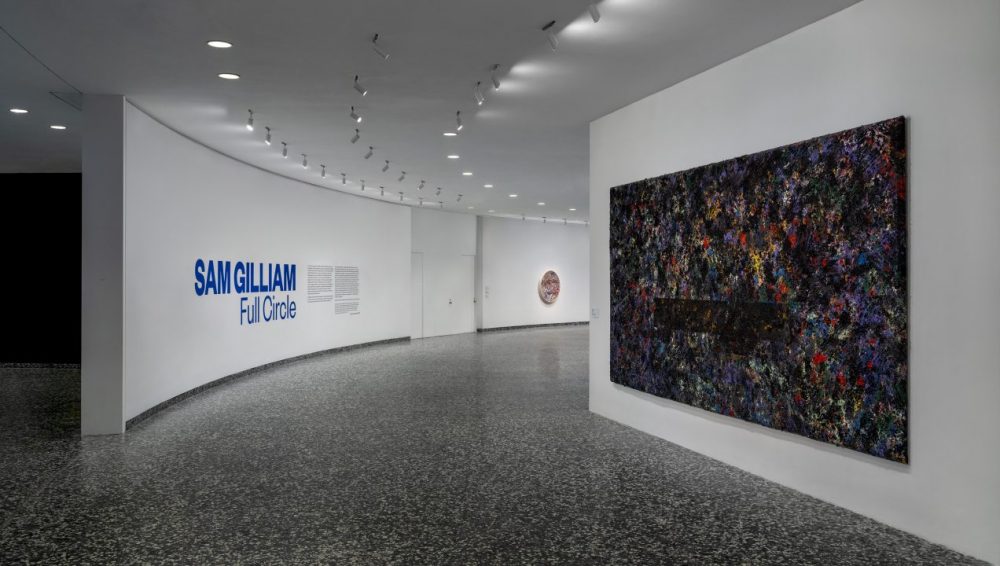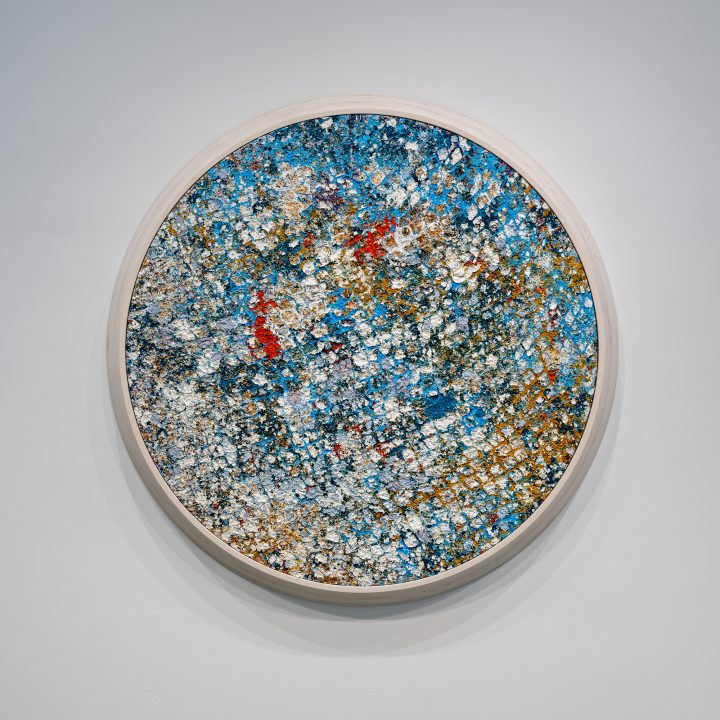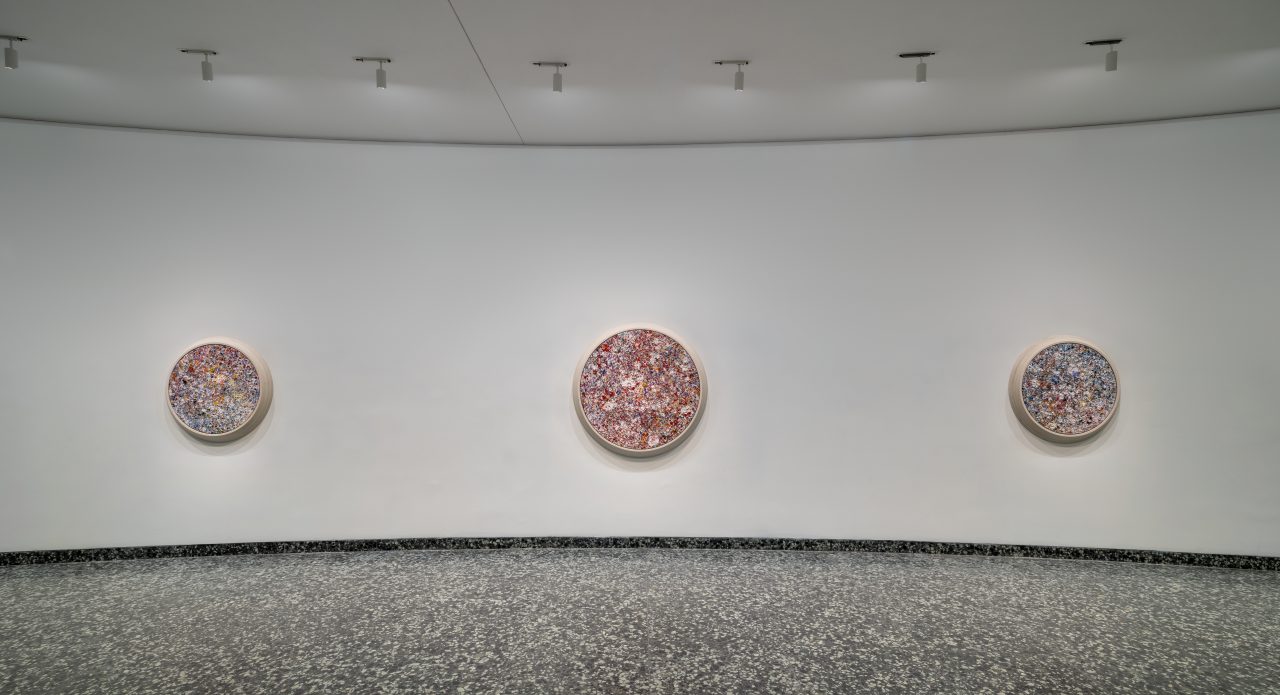When you hear Full Circle in the same sentence as the seasoned and historically impactful abstractionist Sam Gilliam, a retrospective is probably the first thing that comes to mind. In the case of Gilliam’s latest exhibition, the name takes on several meanings. Of the 18 works on display, 17 are circular, bevel-edged canvases ranging from 3 to 5 feet in diameter. These structures, also known as tondos, mimic the shape of the Hirshhorn Museum and Sculpture Garden gallery where they hang. And poignantly, this exhibition marks the end of the artist’s life and active contribution to the canon. Just a month after Full Circle’s opening, Gilliam passed away at the age of 88.
Situated in the museum’s inner rotunda and conceived by lead curator Evelyn Hankins, Full Circle is something of a homecoming for Gilliam, who hasn’t exhibited in Washington, DC, since 2007. Much like the artist’s enduring body of work, the heart of Full Circle is found in its layers. Consisting of pieces primarily produced between 2020 and 2021, the exhibition begins with a nod to a style Gilliam began experimenting with in the late ‘60s that sets the stage and balances the scene.











